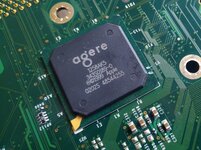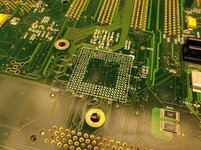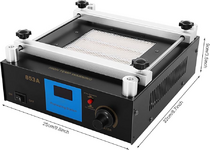I thought I got a good deal on a Quicksilver logic board on eBay, but it was DOA. Upon further inspection, I spotted these gouges in the substrate of what I believe is the KeyLargo chip, the smaller BGA on the back side of the board, near the PCI slots. The damage is in the lower right corner, near the Y5 marking:

I also have a Digital Audio logic board with damage in another area, but its KeyLargo should be fine. I'm thinking of using it as a parts donor to fix the QS board. I'm proficient in soldering but I've never done BGA work, let alone reballing. This feels like a pretty low-stakes way to get some practice. Where should I start? Should I buy balls, and if so, what size/composition? Should I try to use a stencil and paste?

I also have a Digital Audio logic board with damage in another area, but its KeyLargo should be fine. I'm thinking of using it as a parts donor to fix the QS board. I'm proficient in soldering but I've never done BGA work, let alone reballing. This feels like a pretty low-stakes way to get some practice. Where should I start? Should I buy balls, and if so, what size/composition? Should I try to use a stencil and paste?



